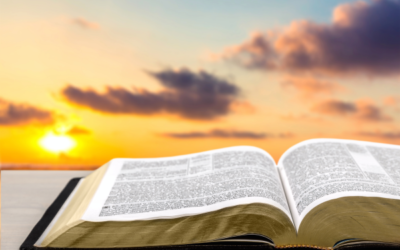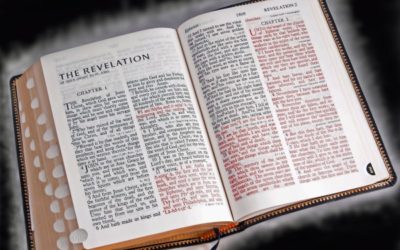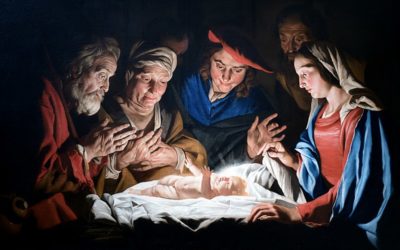The Come, Follow Me curriculum for the week of December 6‒12, 2021, focuses on three important scriptural documents: (1) The Articles of Faith of The Church of Jesus Christ that were published in Joseph Smith’s lifetime; (2) Official Declaration 1, often called “the Manifesto,” which was issued by Church President Wilford Woodruff in 1890 and led to the end of the practice of plural marriage in the Church; and (3) Official Declaration 2, the June 1978 revelation on the priesthood to Church President Spencer W. Kimball that expanded the blessings of the priesthood to those who had previously been denied them because of race or color. These documents show continuing revelation in the Church.
The Articles of Faith
The Articles of Faith of The Church of Jesus Christ of Latter-day Saints, which are included today in the Pearl of Great Price, were included by the Prophet Joseph Smith in a letter he wrote to the John Wentworth, editor of the Chicago Democrat newspaper, in 1842. Joseph often relied on friends to help him with his correspondence and other documents, including this letter, but accepted responsibility for its contents when he had the letter published in the Church’s official newspaper, the Times and Seasons, in Nauvoo, Illinois, later that year. For the full text of the Wentworth letter and more on its history, click here.
The letter includes a series of statements summarizing the beliefs of the Church and now known as the Articles of Faith. For the original text of these statements in the letter, click here.
The Articles of Faith, accepted and adopted by Joseph Smith in the letter, have a long history of their own. They were the latest summary of Church beliefs that had been created to that point during Joseph Smith’s lifetime. For more on the history and development of the Articles of Faith, read “‘We Believe . . . ‘: Development of the Articles of Faith” in the Church’s 1979 Ensign magazine.
One of the most important precursors to the Articles of Faith was the “sketch of the faith and doctrine of this Church” included by Orson Pratt of the Quorum of the Twelve in his 1840 missionary pamphlet published in Edinburgh, Scotland, and titled A Interesting Account of Several Remarkable Visions, and of the Late Discovery of Ancient American Records.
For Orson’s statements of belief and their history, click here.
Official Declaration 1: The 1890 Manifesto
The Ninth Article of Faith declares, “We believe all that God has revealed, all that He does now reveal, and we believe that He will yet reveal many great and important things pertaining to the Kingdom of God.” Official Declarations 1 and 2 in the Doctrine and Covenants illustrate this important principle.
The headnote to Official Declaration 1 reads as follows: “The Bible and the Book of Mormon teach that monogamy is God’s standard for marriage unless He declares otherwise (see 2 Samuel 12:7–8 and Jacob 2:27, 30). Following a revelation to Joseph Smith, the practice of plural marriage was instituted among Church members in the early 1840s (see section 132). From the 1860s to the 1880s, the United States government passed laws to make this religious practice illegal. These laws were eventually upheld by the U.S. Supreme Court. After receiving revelation, President Wilford Woodruff issued the following Manifesto, which was accepted by the Church as authoritative and binding on October 6, 1890. This led to the end of the practice of plural marriage in the Church.”
For more on the history of the practice of plural marriage in the Church, read the following three Gospel Topics essays approved by the First Presidency and Quorum of the Twelve:
Plural Marriage in The Church of Jesus Christ of Latter-day Saints
Plural Marriage in Kirtland and Nauvoo
Plural Marriage and Families in Early Utah
As the headnote of Official Declaration 1 explains, the Manifesto “led to the end of the practice of plural marriage in the Church.” In other words, Church leaders and members did not all cease the practice of plural marriage immediately but eventually did so. For more on this topic and the history of Official Declaration 1, read the following Gospel Topics essay approved by the First Presidency and Quorum of the Twelve:
The Manifesto and the End of Plural Marriage
Official Declaration 2: Revelation on Priesthood
The headnote to Official Declaration 2 explains, “The Book of Mormon teaches that ‘all are alike unto God,’ including ‘black and white, bond and free, male and female’ (2 Nephi 26:33). Throughout the history of the Church, people of every race and ethnicity in many countries have been baptized and have lived as faithful members of the Church. During Joseph Smith’s lifetime, a few black male members of the Church were ordained to the priesthood. Early in its history, Church leaders stopped conferring the priesthood on black males of African descent. Church records offer no clear insights into the origins of this practice. Church leaders believed that a revelation from God was needed to alter this practice and prayerfully sought guidance. The revelation came to Church President Spencer W. Kimball and was affirmed to other Church leaders in the Salt Lake Temple on June 1, 1978. The revelation removed all restrictions with regard to race that once applied to the priesthood.”
For more on the history of race in the Church and additional background on Official Declaration 2, read the following Gospel Topics essay approved by the First Presidency and Quorum of the Twelve:
In 2018, the First Presidency sponsored a celebration in the Conference Center to commemorate the fortieth anniversary of Official Declaration 2. Church members of African descent helped plan the program and participated in it. This was a landmark event, explained here. For more on this event and the histories of Church members of African descent, click here.
In recent times, Church leaders have spoken frequently about race. For example, in the October 2020 general conference of the Church, President Russell M. Nelson made an emotional plea to listeners:
“Each of us has a divine potential because each is a child of God. Each is equal in His eyes. The implications of this truth are profound. Brothers and sisters, please listen carefully to what I am about to say. God does not love one race more than another. His doctrine on this matter is clear. He invites all to come unto Him, ‘black and white, bond and free, male and female.’ (2 Nephi 26:33.)
“I assure you that your standing before God is not determined by the color of your skin. Favor or disfavor with God is dependent upon your devotion to God and His commandments and not the color of your skin.
“I grieve that our Black brothers and sisters the world over are enduring the pains of racism and prejudice. Today I call upon our members everywhere to lead out in abandoning attitudes and actions of prejudice. I plead with you to promote respect for all of God’s children.”
Credit for image at top of page: Stock image from depositphotos.com.



